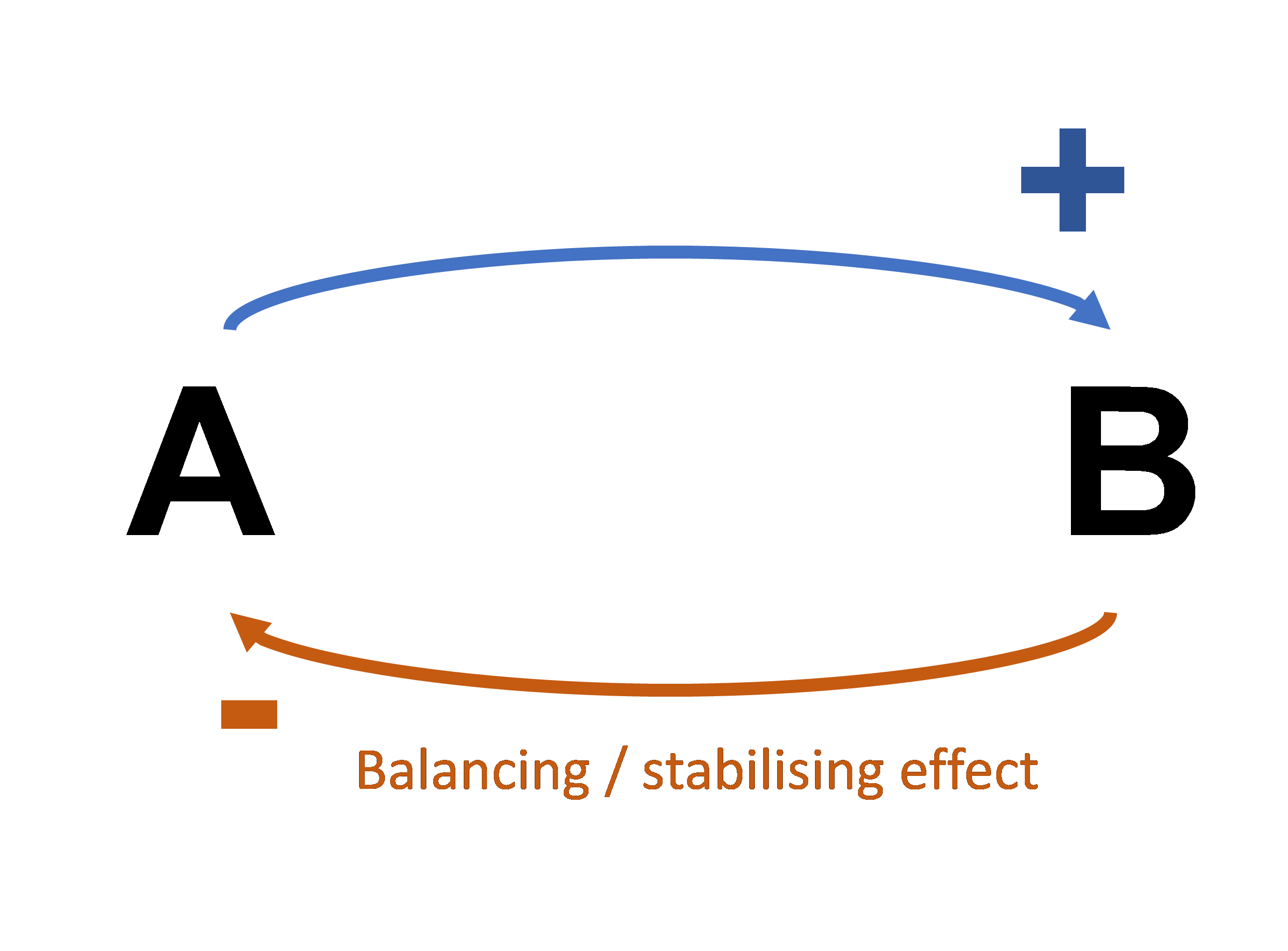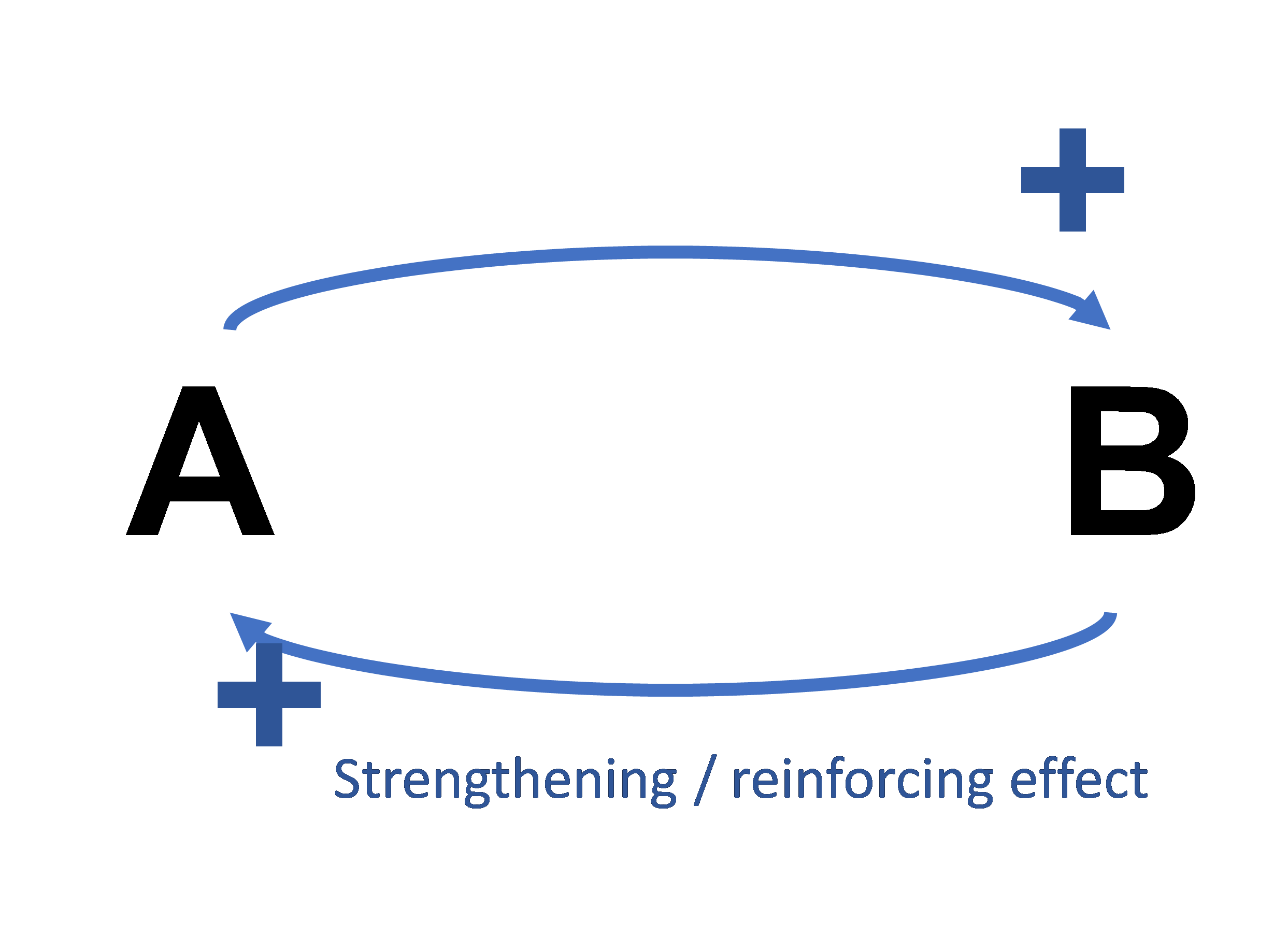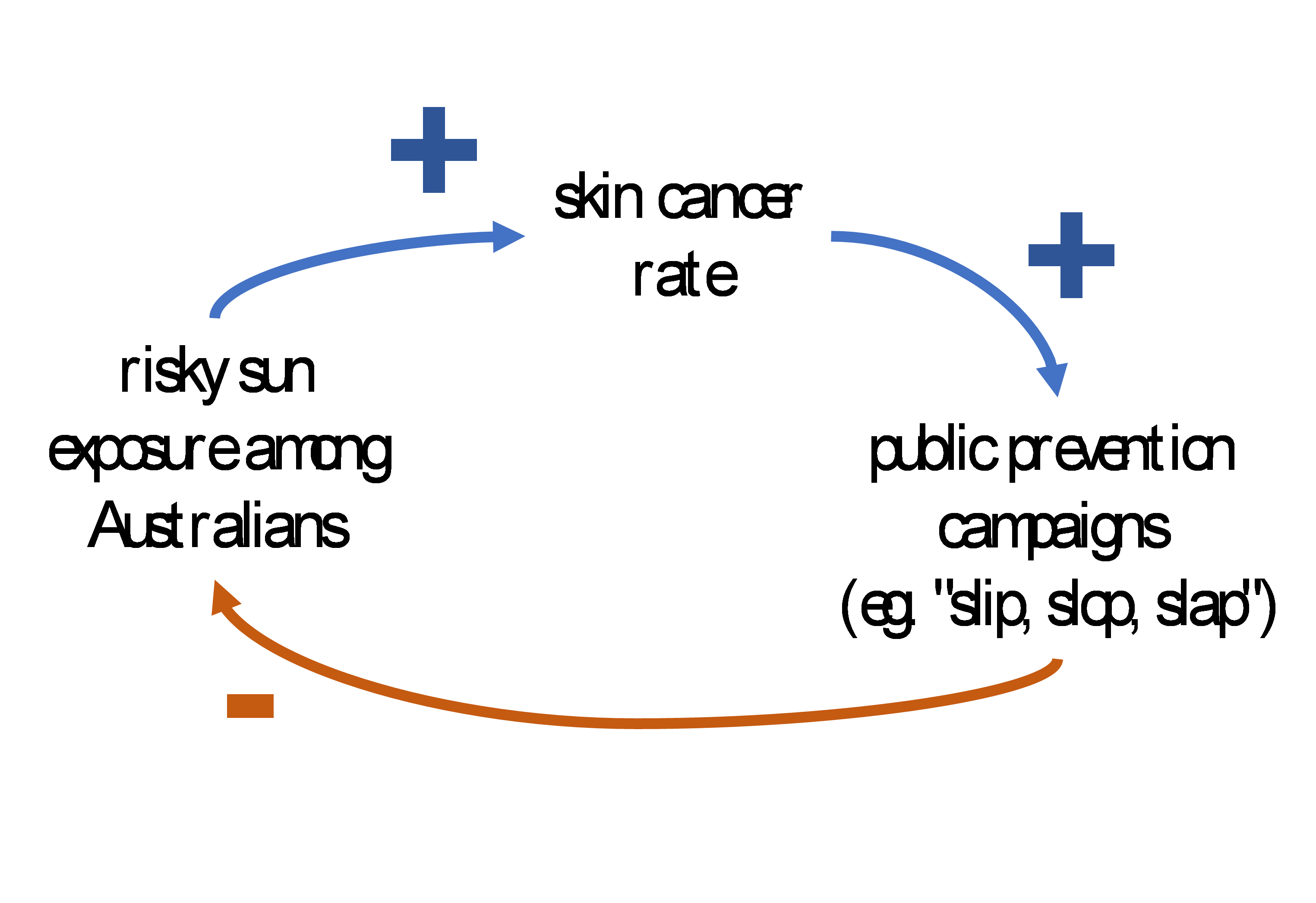Systems Thinking and AI applications

About this lesson
This lesson takes a systems thinking approach to understanding the place of artificial intelligence (AI) as a component within solutions to real world problems, such as predicting bushfire hotspots, spotting and monitoring animals in the wild, automated horticulture and agriculture, and early detection of medical issues.
Year band: 7-8, 9-10
Curriculum Links AssessmentCurriculum Links
Links with the Digital Technologies Curriculum Area.
| Strand | Year | Content Description |
|---|---|---|
| Knowledge and understanding | 7-8 |
Investigate how data is transmitted and secured in wired and wireless networks including the internet (AC9TDI8K02) |
| 9-10 |
Investigate how hardware and software manage, control and secure access to data in networked digital systems (AC9TDI10K01) |
|
| Processes and Production Skills | 7-8 |
Evaluate existing and student solutions against the design criteria, user stories and possible future impact (AC9TDI8P10) |
| 9-10 |
Evaluate existing and student solutions against the design criteria, user stories, possible future impact and opportunities for enterprise (AC9TDI10P10) |
Links with General Capabilities:
| Capability | Element / Sub element | Content Description |
|---|---|---|
| Digital Literacy | The Practising digital safety and wellbeing |
|
| Creating and exchanging |
|
|
| Critical and Creative Thinking | Generating |
|
| Analysing |
|
Assessment
During this lesson, students complete the following individually or in pairs/groups:
- student-selected case study (by completing a blank template)
- new AI application questions (by completing a worksheet)
These items can be used for formative assessment purposes towards the relevant achievement standards below.
Links with Achievement standards:
| Level | Achievement standard |
|---|---|
|
Years 7 and 8 |
"By the end of Year 8 students explain how people design, innovate and produce products, services and environments for preferred futures. Students create and adapt design ideas, processes and solutions, and justify their decisions against developed design criteria that include sustainability." "They develop and modify creative digital solutions, decompose real-world problems, and evaluate alternative solutions against user stories and design criteria." |
|
Years 9 and 10 |
"By the end of Year 10, students explain how digital systems manage, control and secure access to data; and model cyber security threats and explore a vulnerability." "They develop and modify innovative digital solutions, decompose real-world problems, and critically evaluate alternative solutions against stakeholder elicited user stories." |
Learning map and outcomes
In this lesson, students will:
- reflect on the habits of a systems thinker by considering a real-world solution with an AI application – detecting skin cancer
- apply the habits of a systems thinker to one of the provided case studies
- analyse an information system for a real-world solution with an AI component, focusing on habits of a systems thinker
- using a template, prepare a system analysis for a different real-world solution with an AI component
- identify and define their own AI application to address a problem or need, performing the system analysis again.
Learning input
A system is a collection of parts that are arranged and connected in a specific way. Interactions between the parts within the system, and between systems, influence the stability of the system as a whole.
A systems thinker uses a wide perspective and traces interrelationships to ‘join the dots’ and draw conclusions or make predictions about a system. They note events and patterns of behaviour and understand how these are caused by system structures such as feedback loops. Systems thinkers use tools to help with their thinking, such as causal loop diagrams and models.
Students will use the Habits of a systems thinker cards (download the cards as a PDF). These cards are introduced in the lesson idea Habits of a Systems Thinker.
Whole class – Revise the habits of a systems thinker by listing and discussing them.
| Seeks to understand the big picture | Observes how elements within systems change over time, generating patterns and trends |
| Considers an issue fully and resist the urge to come to a quick conclusion | Uses understanding of a system structure to identify possible leverage actions |
| Checks results and changes actions if needed: 'successive approximation' | Surfaces and tests assumptions |
| Changes perspectives to increase understanding | Identifies the circular nature of complex cause and effect relationships |
| Recognises the impact of time delays when exploring cause and effect relationships | Considers how mental models affect current reality and the future |
| Recognises that a system's structure generates its behaviour | Considers short-term and long-term consequences of actions |
| Pays attention to accumulations and their rates of change | Makes meaningful connections within and between systems |
Whole class – Introduce an AI application to model the application of systems thinking habits
In the following example, the focus is on using AI to assist with skin cancer detection. You could use one of the following videos to exemplify how some businesses are using AI and machine learning in the area of health. (Note: this is not an exercise in endorsing the businesses themselves.)
- FotoFinder Moleanalyzer pro - Artificial Intelligence in dermoscopy
- Detect skin cancer with your phone using SkinVision
Ask students to consider which habits of a systems thinker apply to the problem of skin cancer detection within the healthcare system. Explain how the habit applies, and include an example.
Students may suggest habits such as:
- Seeks to understand the big picture: Globally, skin cancer is an issue. The patient, doctor, AI application, even environmental exposure, are all part of the healthcare system that can prevent, detect and treat skin cancer. The AI application can help to save many lives.
- Observes how elements within a system change over time: Moles change over time. Observing these changes in the patient is important for early detection of skin cancer.
- Recognises impact of time delays: It is important to detect skin cancers early. Self-detection takes some of the burden off the health system. As a separate example, public health initiatives can take years (sometimes a generation) to bring about changes in behaviour.
- Makes meaningful connections: The doctor-and-patient connection is a critical link for detecting skin cancer. The AI application may improve the success rate at this connection point in the system.
- Pays attention to accumulations and their rates of change: Research suggest that exposure to UV light increases chances of skin cancer.
Students complete the sentences below to revise the concepts of positive and negative feedback loops covered in the lesson idea Habits of a systems thinker.
When a change is happening in a system, a _________ feedback loop tends to dampen or buffer the change, leading to more stability.
An example is _____________________________________________________________.

When a change is happening in a system, a _________ feedback loop tends to amplify or exacerbate the change, leading to less stability.
An example is _____________________________________________________________.

Whole class – Identify any positive or negative feedback loops in the healthcare system in the context of skin cancer detection, the system discussed earlier. Draw these using causal loops.
Students may suggest feedback loops such as:

Learning construction
Applying habits of a Systems Thinker
- Using the same process as in ‘Learning input’ above, ask students to select an AI application of interest and apply the habits of a systems thinker. Students can record their ideas in list form or as a concept map, using causal loops to illustrate positive or negative feedback loops.
- Select from the following case studies:
Environmental monitoring
Conservation
Agriculture
Example case study: Lifesaver drone combined with shark spotting AI
- Start by viewing the video and reading the article here.
Source: The Ripper Group
- Spend some time discussing this system as a class.
- What are the main purposes of the system?
- How does the system meet the need for beach shark safety in a way that is potentially better than other approaches?
- Two specific components are mentioned here: the lifesaver drone itself and the shark spotting image recognition AI algorithm.
- Do you think the AI algorithm runs onboard the drone or on a computer elsewhere? Why?
- What hardware is needed to connect these two components?
- How/where are people involved in this system?
- In groups or pairs, students view the completed template to guide them through an analysis of this system. The completed template includes annotations to explain each section.
Student selected case study
- Provide students with the blank template, Analysis of an Information System and ask them to refer to the completed template Analysis of an Information System using the Shark AI spotter as an example.
- Ask students to perform an analysis of a system of their choice that includes an AI component. Students may continue to work in pairs or groups.
- Students can choose from the following examples:
Environmental monitoring
Medical and health monitoring
- FotoFinder Moleanalyzer pro - Artificial Intelligence in dermoscopy or Detect skin cancer with your phone using SkinVision
Conservation
Agriculture
- Farmbot or Orchard Autonomy and Precision Targeting Using RIPPA and VIIPA
- Accelerating crop farmers’ adaptation to climate change
More complex case studies
Learning construction and demonstration
Students consider a new AI application they think will benefit society or the environment, and may use the worksheet called A new AI application to answer the questions below.
- What problem needs solving, or what need could be met?
- The application may save time, money, improve health of individuals, help people with a disability, conserve wildlife or the environment.
- It may be at home, school, work, on the street, in common places such as libraries, in nature.
- What activities or tasks occur that are often repeated?
- What might benefit from automation?
- Would solving the problem benefit from learning from past data?
- What is the purpose of the application?
- Define the goal of the application in positive terms.
- What are the parts of the application system?
- Represent the application as a system, including hardware, software, people and procedures.
- List all the parts of the system, including the key AI component as a part.
- What are the connections in the application system?
- Draw a diagram of the system, showing the listed parts and any connections you can make.
- What data sources does the key AI component need to function?
- Does it need to analyse images and data? (computer vision)
- Does it need to clump data, categorise and label the data? (classification)
- Does it look for trends in data and relationships in that data? (pattern recognition)
- Does it need to interpret speech or text? (natural language processing)
- What data or information does the key AI component produce?
- Why is it necessary in the system?
- How does the AI component interact with the system?
- Identify any feedback loops between the AI component and the other parts of the system.
- What keeps the system in a stable state and how is the AI component monitored?
- Identify the supra system or connected system.
- Name at least one supra system (a larger system that your application is part of) or another system connected to the application. For example, it might be societal, government, environmental, financial, etc.
- List some other parts of the supra system.
- What are the impacts on the supra systemor connected system?
- What is a likely impact of the application on the supra system or connected system?
- What unintended impacts might there be? (Consider time delays.)
- What ethical concerns might arise?
- Consider two different viewpoints from people or groups with a connection to the application.
- What ethical concerns might these people or groups have about the application?
- What choices or actions might they suggest to make the application better or worse?
Resources
Lesson idea
- Habits of a systems thinker – This lesson idea introduces basic systems thinking skills and concepts, including a context related to the Australian Curriculum: Digital Technologies.
Videos
- Systems thinking video for teachers from CSER (University of Adelaide)
Environmental monitoring
Medical and health monitoring
- FotoFinder Moleanalyzer pro - Artificial Intelligence in dermoscopy or Detect skin cancer with your phone using SkinVision
Conservation
Agriculture
Websites
Worksheets, PDFs
- Worksheet: A new AI application
- PDF: Habits of a Systems Thinker cards from the Waters Center for Systems Thinking
- The Waters Center for Systems Thinking
- Systems Thinking video for teachers from CSER (University of Adelaide)